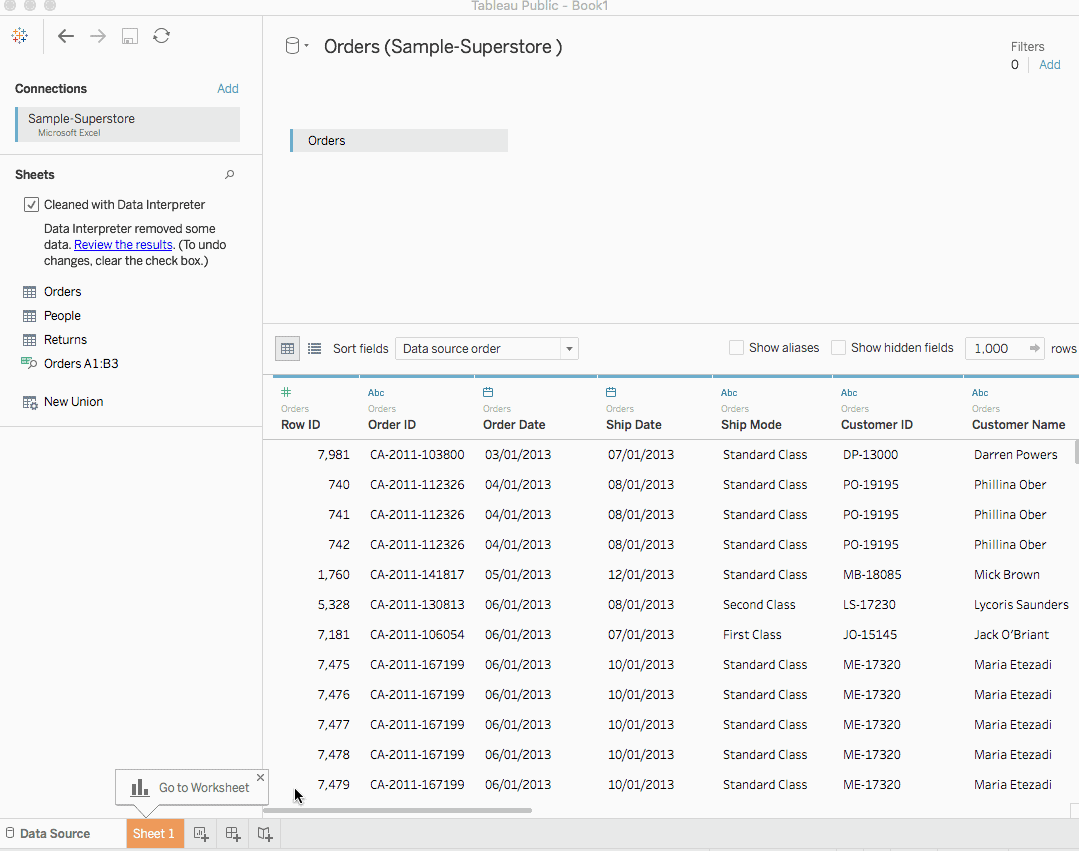

When a value in the left table doesn't have a corresponding match in the right table, you see a null value in the data grid. When you use a left join to combine tables, the result is a table that contains all values from the left table and corresponding matches from the right table. When a value doesn't match across both tables, it is dropped entirely. When you use an inner join to combine tables, the result is a table that contains values that have matches in both tables. If you aren't sure what join type you want to use to combine data from multiple tables, you should use relationships.
Tableau public data sets full#
In general, there are four types of joins that you can use in Tableau: inner, left, right, and full outer. Joins are defined by their type as well as the join clause. To troubleshoot your join, see Join Your Data.


When finished, close the join dialog and join canvas.Īfter you've created a join, Join Your Data. Note: You can delete an unwanted join clauses by clicking the "x" that displays when you hover over the right side of the join clause. Add one or more join clauses by selecting a field from one of the available tables used in the data source, choosing a join operator, and a field from the added table. With that connection selected, drag the desired table to the join canvas.Ĭlick the join icon to configure the join. If your next table is from another data source entirely, in the left pane, under Connections, click the Add button ( in web authoring) to add a new connection to the Tableau data source. Select Open from the menu or double-click the first table to open the join canvas (physical layer).ĭouble-clicking a table on the relationship canvas opens the join canvasĭouble-click or drag another table to the join canvas. Note that if you drag out a second table at this point a relationship will form. To combine published data sources, edit the original data sources to natively contain the join or use a data blend. Note: Not all data sources support cross-database joins, including published Tableau data sources. If you combined tables using a cross-database join, Tableau colors the tables in the canvas and the columns in the data grid to show you which connection the data comes from. These can be in the same data source (such as tables in a database or sheets in an Excel spreadsheet) or different data sources (this is known as a cross-database join). To create a join, connect to the relevant data source or sources. If you need to do multiple joins, clean up field names, change data types, perform multiple pivots, or other sorts of involved data prep, consider using Tableau Prep Builder (Link opens in a new window). Tip: While Tableau Desktop has the capability to create joins and do some basic data shaping, Tableau Prep Builder is designed for data preparation. To join data and be able to clean up duplicate fields, use Tableau Prep Builder instead of Desktop Fields used in the join clause cannot be removed without breaking the join.If you change the data type after you join the tables, the join will break. When joining tables, the fields that you join on must be the same data type.To combine published data sources, you must edit the original data sources to natively contain the join or use a data blend. Published Tableau data sources cannot be used in joins.To view, edit, or create joins, you must open a logical table in the relationship canvas-the area you see when you first open or create a data source-and access the join canvas.As such, Improve Performance for Cross-Database Joins may be relevant. For example, a relationship across data sources will produce a cross-database join when the viz uses fields from tables in different data sources. Note: Relationships eventually leverage joins (just behind the scenes). However, there may be times when you want to directly establish a join, either for control or for desired aspects of a join compared to a relationship, such as deliberate filtering or duplication. For more information, see How Relationships Differ from Joins. Relationships are the recommended method of combining data in most instances. Relationships also allow for context-based joins to be performed on a sheet-by-sheet basis, making each data source more flexible. Relationships preserve the original tables’ level of detail when combining information. The default method in Tableau Desktop is to use relationships. Depending on the structure of the data and the needs of the analysis, there are several ways to combine the tables. It is often necessary to combine data from multiple places-different tables or even data sources-to perform a desired analysis.


 0 kommentar(er)
0 kommentar(er)
